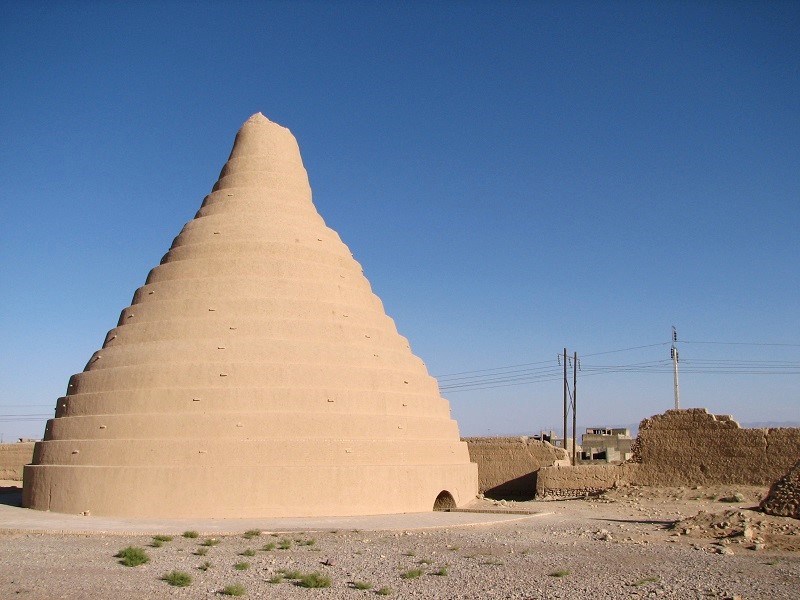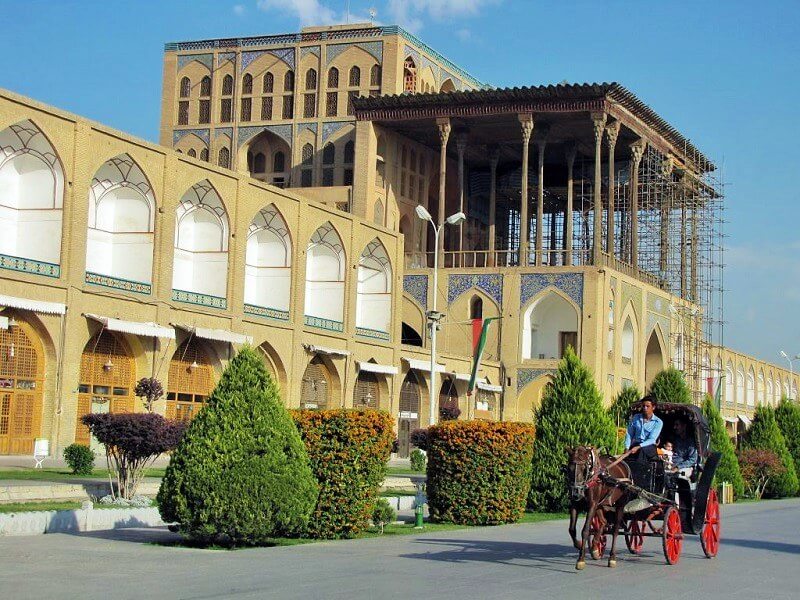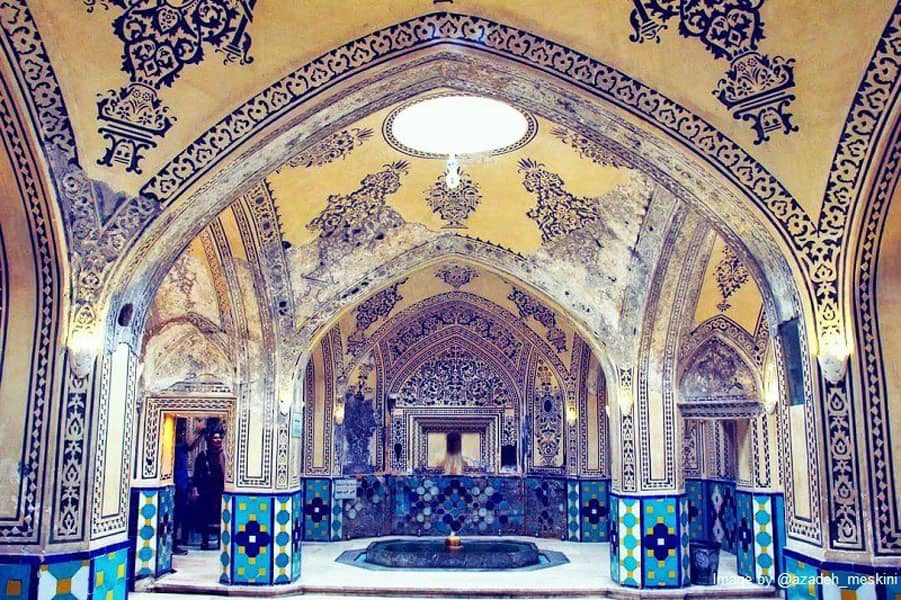
The city of Kashan, a part of Isfahan province, is considered the cradle of Iranian civilization and culture. Given its unique historical monuments, the city is vital in Iran’s tourism industry. One of these works is Sultan Amir Ahmad Bathhouse, registered in Iran’s national heritage list in 1977.
The initial structure of the bathhouse dates back to the Seljuk period. Parts of it, like the Sarbineh or apodyterium (bathhouse entrance), were created in the Qajar Dynasty. The vaulted ceilings of the bathroom showcase exquisite mosaic work and artwork.
3 Traditional Areas in Sultan Amir Ahmad Bathhouse
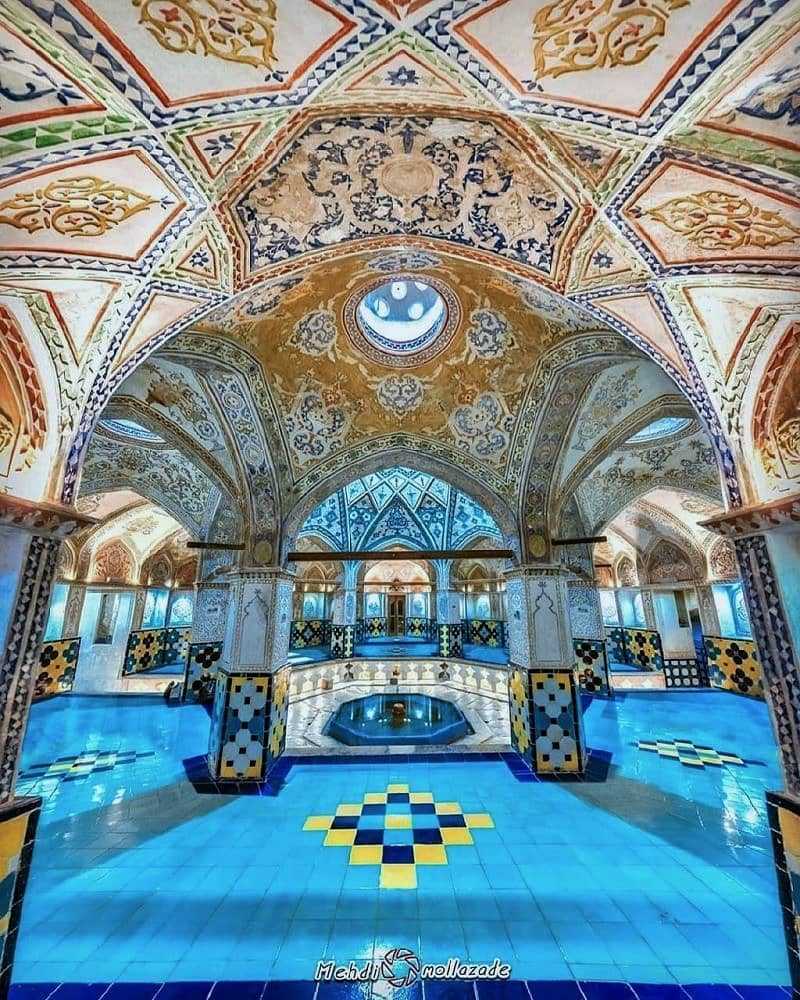
The forecourt of Amir Ahmad’s bathhouse is located at the threshold before the entrance. After passing through the forecourt, we reach the bathhouse entrance.
The façade above the entrance to the bathhouse is decorated with plaster works, coffers, Yazdi Bandi arch (a traditional decorative pattern originating in Yazd), and Muqarnas arches (ornamented vaulting). Designs of flowers and bushes, figurines, and murals of women are displayed above the entrance to the bathhouse.
Passing through, we see the bathhouse vestibule separating the inner bathhouse from the outside. This part has decorations such as Rasmi Bandi or coffer (a traditional style of geometric decoration), adding to the sublimeness of this bathhouse.
There were three main areas in the architecture of most traditional Iranian bathhouses (until the Pahlavi period). These areas include Sarbineh or apodyterium (dressing room), Mian-Dar or passage, and bathhouse Khazineh (Caldarium). This style of bathhouse is known as the Khazineh bathhouse. After water piping, Khazineh-style bathhouses were replaced with showers or separate bathrooms. Sultan Amir Ahmad Bathhouse is an example of this shift in architecture.
In the following, we will introduce these three areas in old Iranian bathhouses:
1.Sarbineh (changing room)
Passing the Amir Ahmed Bathhouse vestibule, we reach an octagonal hall through a corridor. An octagonal pool at the center of this hall houses a fountain. This octagonal hall is branched into separate areas by eight columns. Platforms are in place on each side as sitting arrangements. The rest of the hall area forms the bathhouse Sarbineh.
The bathhouse Sarbineh is coated with turquoise and golden mosaics. These mosaic works are in the Zir Rangi style. Zir Rangi mosaic work is a style of tilework where clay tiles are utilized. They are covered with vitreous enamel and baked in the furnace.
In addition, embellishments such as plasterwork, brickwork, and artistic murals caress the eye in this area of the Sultan Amir Ahmad Bathhouse. Stone shoe racks also constitute another part of the bathhouse changing room.
In addition, there are two stalls facing each other in the area surrounding the Sarbineh. These stalls are part of Sarbineh Shahneshin (most elaborate part of the house, hammam, or any other building in Iranian architecture). This area was reserved for elders and nobles.
In the past, the sentence “La ilaha ila Allah” (There’s no god but Allah) was carved into the ceiling of Sultan Amir Ahmed Bathhouse facing Qibla (direction of the Kabaa). After the noted earthquake of the Zandiyeh period (18th century A.D.), the roof of the building collapsed. Now there is no trace of this carving. The bathroom roof was restored in the second half of the 19th century.
2. Mian-Dar (passage)
After Sarbineh, there is Mian-Dar or passage. This part is a corridor-like area with two 90-degree turns. This twist in the bathhouse corridor is meant to prevent heat loss. Also, this area is designed to regulate body temperature.
This area is responsible for linking the Sarbineh and Kharmkhaneh(sauna). We can get to the next room through this corridor, which is designed for washing and cleaning in Sultan Amir Ahmad Bathhouse. Apart from that, Mian-Dar serves no other purpose.
3. Garmkhaneh (Warm Room) and Khazineh
The Garmkhaneh in Sultan Amir Ahmad Bathhouse has a more straightforward design than the Sarbineh. It is a place for washing and cleaning. The first meter on the warm room wall is covered with marquetry mosaics and the rest with Sarooj (cement-like) mortar. Sarooj is a water-resistant mortar traditionally made from several materials including lime and ash before cement.
The warm house area is divided into three parts with four columns. The two side areas of the warm room are for washing, and the central part houses a pool. The center of the warm room is the path to the Khazineh.
The Khazineh is located adjacent to the warm room. This Khazineh has two pools with hot and cold water. According to traditions, it is better to dip our feet in cold water after a bath. It seems that these pools were built for this purpose.
Golkhan (Stove or Boiler) of Sultan Amir Ahmad Bathhouse
This bathhouse area is made as a backup water reservoir. In this area, the bathhouse water is heated and flows into the warm house through clay pipes.
Do Not Miss Visiting This Attraction:
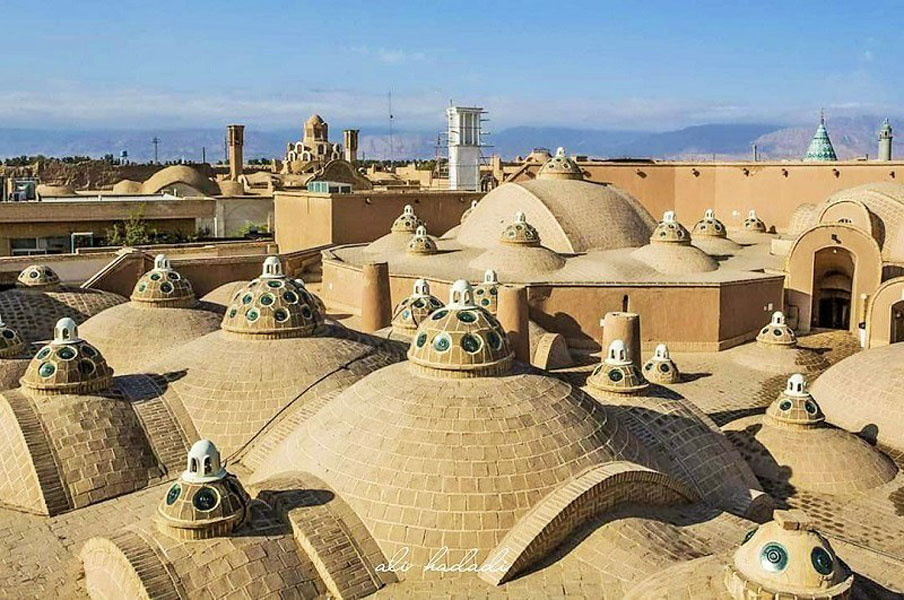
Sultan Amir Ahmad Bathhouse is a historical bathhouse with each of its areas possessing a distinguished elegance. If you travel to Kashan on international tour packages of Iran or by yourself, do not miss visiting this historical bathhouse.
We at “Destination Iran” try to introduce the best tourist attractions of Kashan to you. We invite you to research these attractions before traveling and make a conscious trip to Iran.






